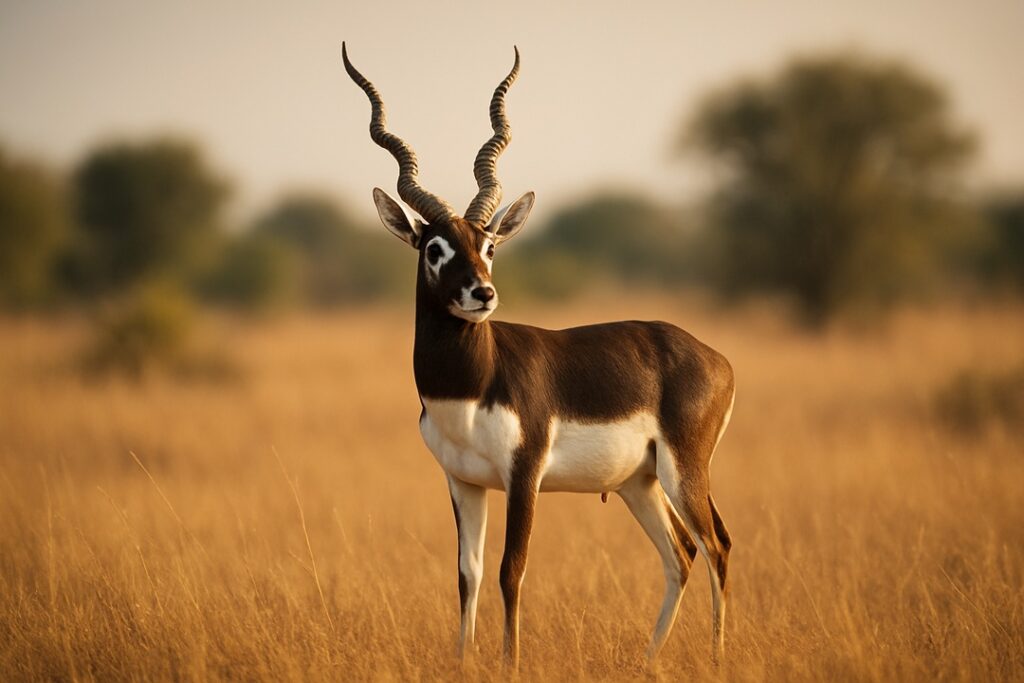Wildlife Health Crisis: Blackbuck Deaths in Belagavi Zoo

Context:
Thirty-one blackbucks at Karnataka’s Kittur Rani Chennamma Zoo in Belagavi died due to a suspected bacterial infection, prompting the state Forest Minister to order a high-level investigation.
About Blackbuck
What it is:
The blackbuck (Antilope cervicapra) is a diurnal grassland antelope native to the Indian subcontinent, recognised for its marked sexual dimorphism and spiralled horns.
Habitat:
Found in open short grasslands, semi-arid landscapes, and agricultural edges; avoids dense forested areas.
Conservation Status:
Listed as Least Concern (IUCN), yet protected under Schedule I of the Wildlife (Protection) Act, 1972 in India.
Key Characteristics
Distinctive Horns:
Adult males possess long (50–71 cm), spiralled, ringed horns forming a wide V-shape.
Sexual Dimorphism:
Males have a dark brown-to-black coat with a white underside and facial markings; females and young males are fawn to light brown.
Speed and Agility:
Among the fastest land animals in India, capable of reaching speeds up to 80 km/h.
Social Structure:
Organises into flexible herd types: female groups with young, bachelor male herds, and territorial males guarding exclusive territories.
Scent Marking:
Territorial males mark their area using preorbital gland secretions and dung middens.
Cause of Death in This Case:
A bacterial infection (specific pathogen under investigation) causing rapid mortality within the confined zoo environment.
About Kittur Rani Chennamma Zoo
What it is:
A mini zoo and conservation space, also known as Bhutaramanahatti Zoo, dedicated to wildlife protection, education, and awareness.
Location:
Situated in Belagavi, Karnataka, around 12 km from the city along National Highway-4.
Key Features
- Established in 1989; spread over 68 hectares.
- Houses diverse wildlife species in naturalistic enclosures.
- Prioritises conservation of local biodiversity and environmental education.
- Serves as a recreational and learning destination for students, families, and nature enthusiasts.
Conclusion
The incident highlights the need for stronger disease surveillance, improved enclosure hygiene, and better preventive veterinary care in Indian zoos. It also underscores the vulnerability of protected species like the blackbuck, even within controlled environments, emphasising the urgency of implementing robust biosecurity measures.
Source : NDTV
